- Watch The JD Rucker Show every day to be truly informed.
A 104-page report issued three months after the events at the Capitol Building on Jan. 6, 2021, said the Capitol Police’s Civil Disturbance Unit (CDU) was ordered by supervisors not to use “heavier, less-lethal weapons,” like flash bangs. However, video evidence—along with Capitol Police Use of Force Reports obtained exclusively by The Epoch Times—exposes conflicts in timelines, the brutality of the unprovoked attacks against Jan. 6 protesters, and how leadership ordered the deployment of munitions on a peaceful crowd.
The Video Evidence
Victoria White
According to Police1, the “#1 resource for law enforcement online,” which promotes “the highest standards of business ethics,” police are trained to target large muscle groups like legs, chest, abdomen, and arms with batons. Intentionally striking areas like the head, sternum, and spine are considered to be the same act of deadly force as firing a gun.
However, a video shows Jan. 6 defendant Victoria White being beaten over the head 35 times with a metal baton and punched in the face by an officer of the Metropolitan Police of the District of Columbia. White, seen wearing a Trump hat, is unarmed and posed no threat to the officer. She raises her hands in defense during the brutal attack, collapsing more than once, only to be stood up by other officers to be maced and beaten again.
According to a Use of Force report filed 1/7/21 by Officer Dante Price, obtained exclusively by The Epoch Times, “approved strike areas” for use of a baton “include arms, legs and large muscle groups.” Injuries suffered by Dante’s victim required hospital transport. Another report of an injury caused by use of a baton, filed 1/8/21 by Officer Ryan Kendall, states “approved target areas” include the “upper abdomen.”
“To add insult to injury,” her legal team said at a Jan. 6, 2022 press conference, “she was indicted for being pushed into the tunnel entrance and for daring to put her hands up in a defensive posture while getting beaten by the police.”
White has filed a $1 million lawsuit against D.C. Police Chief Robert Contree and seven unnamed officers, including one known as “Officer Whiteshirt,” given the moniker as it is believed his clothing identified him as an officer in a position of authority.
Roseanne Boyland
Another video obtained by The Epoch Times shows D.C. Metro Police Officer Lila Morris beating an unconscious 34-year-old Roseanne Boyland of Kennesaw, Georgia with a steel baton and then with a large wooden walking stick. According to witnesses, Boyland lost consciousness and stopped breathing after being crushed beneath the weight of other fallen protesters. Being unconscious, Boyland was no threat to the officer.
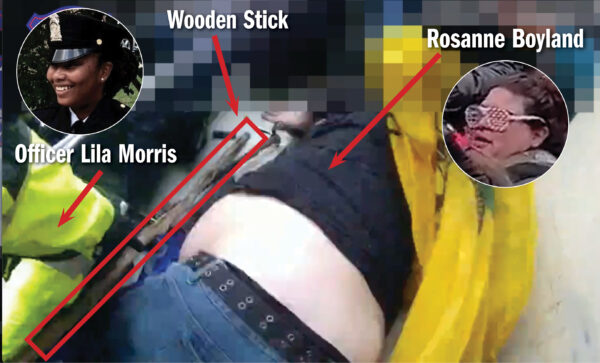
A DC medical examiner claims Boyland died of an accidental overdose of Adderall, a suspicious ruling that sparked outrage from Boyland’s friends and family. Her father, Bret Boyland, said his daughter had been taking Adderall for about 10 years to treat an attention deficit hyperactivity disorder.
The Epoch Times reported on Feb. 10, an investigation by the department’s Internal Affairs Bureau cleared Morris of any wrongdoing and deemed her beating of the unconscious Boyland as “objectively reasonable.”
A separate report describes how Morris first used the wooden stick while beating Boyland to strike 41-year-old filmmaker Luke Coffee on the left elbow. A second swing missed before she sprayed him in the face with pepper gel. “Morris then inexplicably turned her fury on the motionless Boyland, striking her in the ribs once and twice in the head,” the report said.
Ashli Babbitt
Ashli Babbitt, a 35-year-old unarmed Air Force veteran and ardent supporter of former President Donald Trump was shot and killed by U.S. Capitol Police Lt. Michael Byrd. While news media has labeled Babbitt as a violent “insurrectionist” who was trying to breach the Speaker’s Lobby, a frame-by-frame analysis of the video from The Epoch Times shows Babbitt tried to stop the violence against the Speaker’s Lobby at least four times before she was fatally shot.
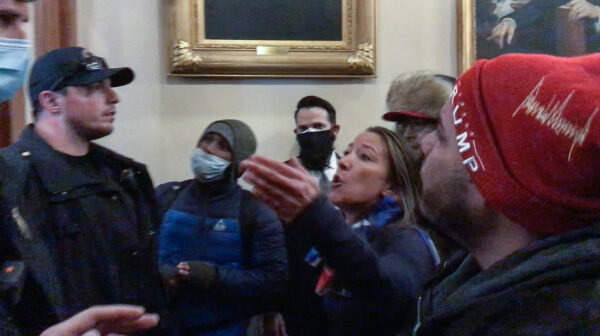
Two reports, filed by two officers who were with Byrd at the moment he shot Babbitt, were also obtained exclusively by The Epoch Times.
According to a report by Paul McKenna of the United States Capitol Police (USCP) Uniformed Service Bureau, as protesters “began pounding” on the “East door of the lobby” and breaking the glass, he drew his weapon along with Byrd and Officer Reggie Tyson. He “yelled ‘stay back’ ‘get back’ several times during the incident.”
“A woman climbed through the far left window pane, which had been broken out by the group,” McKenna attested. “Lt. Byrd fired one shot hitting the woman. She fell back out of the window and I continued yelling at the group to get back and away from the doors.”
McKenna claims the incident happened between 1430 and 1500 hours (2:30 p.m. and 3:00 p.m.). The report was signed by McKenna on June 9, 2021. It was signed by his supervisor five months earlier, on Jan. 7, 2021.
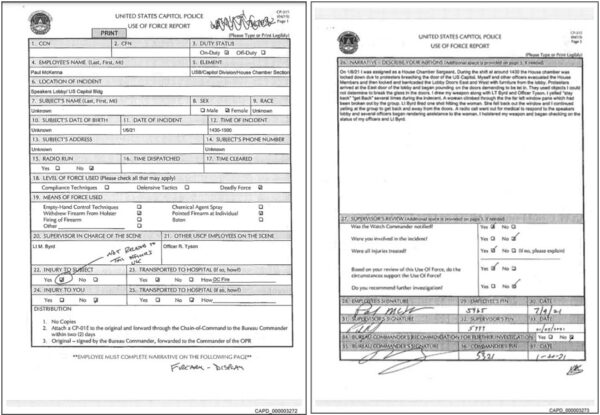
In the second report, filed Jan. 7, 2021, Tyson said he heard “shots fired” over his radio some time after 1440 (2:40 p.m.). In an attempt to protect himself, Tyson said he withdrew his weapon and made his way to the lobby east side of the capitol along with Byrd and McKenna. “A protester tried to climb through the broken window where she was shot one time as she fell back.” Tyson claims the time of the incident was around 1500 hours (3:00 p.m.).
In another report, USCP Officer Tyler Stoyle claims he responded to “a shots fired” call over their his radio at “1400 hours” (2:00 p.m.), 40 minutes earlier than Tyson claimed to have heard the call of “shots fired.”
A separate report filed by USCP Officer Jason McGinnis, said he “responded to the North side of Crypt” at “approximately 1400 hours” and drew his baton to “hold the line of unscreened individuals that were trespassing.”
However, it wasn’t until “after the initial surge had ended” and McGinnis “was moving trespassers out of the South Door” that he claimed “there were reports of shots fired in the Speaker’s Lobby Stairs to the second floor.”
During an interview with NBC, Byrd also claimed to hear “shots fired.”
However, Byrd was the only one to fire a weapon on Jan. 6, 2021. This, and the conflicts in times reported by police regarding when they heard “shots fired,” raises questions.
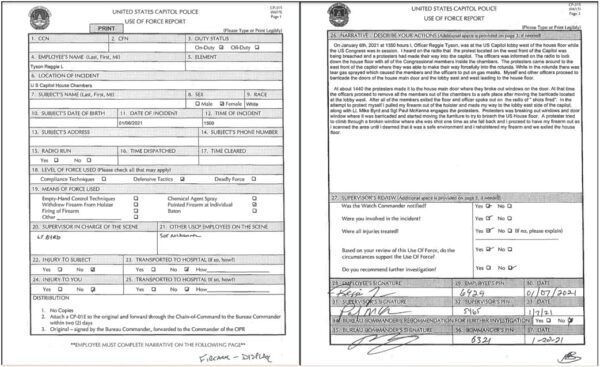
According to a July 25 report by The Epoch Times, Stan Kephart—a 42-year law enforcement veteran and former director of security for the 1984 Los Angeles Summer Olympics who has testified in court more than 350 times as an expert witness on policing issues—said Babbitt was “murdered … under the color of authority.”
However, a review of the reports filed by Tyson and McKenna, the Bureau Commander found “the circumstances support the Use of Force” and did not recommend any further investigation.
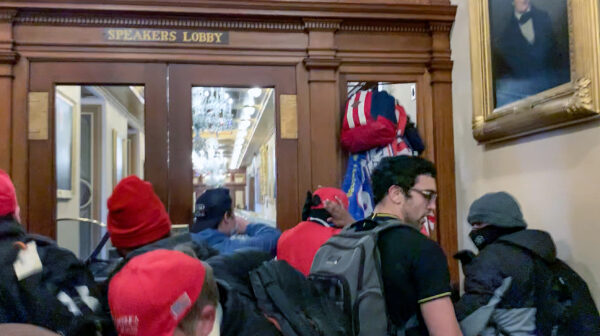
Byrd also told NBC he yelled verbal warnings so hard that his throat hurt for days after. Neither of the reports filed by Tyson or McKenna corroborate his claim. Byrd cannot be heard shouting anything on the video either.
Byrd insisted he opened fire on an unarmed Babbitt only as a “last resort.”
“I know that day I saved countless lives,” Byrd said.
In August 2021, the U.S. Capitol Police investigation cleared Byrd of any wrongdoing.
Use of Force Reports
According to a report released March 7 by the United States Government Accountability Office (GAO), “the January 6th attack on the Capitol raised concerns” about the preparedness of USCP “to respond to violent demonstrations.”
Key findings from the report:
- Eighty officers “identified concerns related to use of force, including that they felt discouraged or hesitant to use force because of a fear of disciplinary actions.”
- Approximately 150 Capitol Police officers reported 293 use of force incidents on Jan. 6. All were deemed justified by the department.
- These incidents involved pushing (91), batons (83), withdrawing a firearm from its holster (37), chemical spray (34), other physical tactics (22), pointing a firearm at a person (17), less-lethal munitions (7), a diversionary device (1) and firing a firearm (1).
Of the 293 Use of Force (UOF) reports filed, The Epoch Times has obtained 161 of them, including the ones filed by Tyson and McKenna regarding the shooting of Babbitt by Byrd.
-
The Importance of Prayer: How a Christian Gold Company Stands Out by Defending Americans’ Retirement
‘Less Than Lethal Munitions’ UOF Reports
According to one UOF report, dated 1/7/21, Officer Adam Descamp said he was ordered by Deputy Chief Eric Waldow “to deploy less than lethal munitions on an overwhelming number of rioters at the U.S. Capitol.
“I deployed multiple FN303 projectiles from the FN303 launcher, administered strikes with the PR-24 baton and utilized the Sabre red pepper spray to gain compliance from the rioters that were aggressively attacking officers on the police line and throughout the Capitol complex,” Descamp wrote of his actions at “approximately 1215 hours” (12:15 p.m.).
Waldow was incident commander of the Civil Disturbance Unit on Jan. 6, which was reported to be highly disorganized and woefully unprepared.
At “approximately 1215 hours,” Officer Melissa Lee also reported on 1/7/21 that she “was ordered to the scene by Deputy Chief Waldow to deploy less than lethal munitions on an overwhelming number of rioters at the U.S. Capitol Building,” using nearly the same, identical verbiage as Descamp.
Don’t just survive — THRIVE! Prepper All-Naturals has freeze-dried steaks for long-term storage. Don’t wait for food shortages to get worse. Stock up today. Use promo code “jdr” at checkout for 25% off!
“I deployed multiple FN303 projectiles from the FN303 launcher to gain compliance from the rioters that were aggressively attacking officers on the police line and throughout the Capitol complex,” she wrote.
A report filed by Officer Matthew Flood, also “at approximately 1215 hours,” also states he was ordered by Deputy Chief Waldow “to deploy less than lethal munitions on an overwhelming number of rioters at the U.S. Capitol.”
“I deployed multiple projectiles from the FN303 launcher, and chemical agent spray,” he wrote, using language remarkably similar to that of Descamp and Lee, “to gain compliance from the rioters that were aggressively attacking officers on the police line and throughout the Capitol complex,” he wrote on his report, also date 1/7/21.
“At approximately 1215 hours,” Officer Tina Cobert also reported on 1/7/21 that she “was ordered to deploy less than lethal munitions on an overwhelming number of rioters at the U.S. Capitol by Deputy Chief Waldow.
“I deployed multiple projectiles from the FN 303 Launcher to gain compliance from the rioters that were aggressively attacking officers on the police line and throughout the Capitol complex,” she also wrote.
Also “at approximately 1215 hours,” Officer Christopher Sprifke reported he “was ordered to deploy less than lethal munitions on an overwhelming number of rioters at the U.S. Capitol by Deputy Chief Waldow.
“I deployed multiple PepperBall projectiles to gain compliance from the rioters that were aggressively attacking officers on the police line and throughout the Capitol building,” he wrote in his 1/7/21 report.
“At approximately 1215 hours,” Officer Shauni Kerkhoff said she was also “ordered by Deputy Chief Waldow, Eric to deploy less than lethal munitions on an overwhelming number of rioters at the U.S. Capitol.
“I deployed multiple projectiles from the PepperBall launcher to gain compliance from the rioters that were aggressively attacking officers on the police line and throughout the Capitol complex,” she wrote in his report, also dated 1/7/21.
In February 2021, the U.S. Capitol police union issued an overwhelming no-confidence vote for a half-dozen of the force’s top leaders, including Waldow.
Instead of leading his team of officers, Waldow chose to physically engage rioters, a move many of his fellow officers saw as wrong. In October 2021, Waldow submitted paperwork for his resignation.
At “approximately 1400hrs,” Officer Patrick Kahl reported that he “discharged multiple 40mm baton rounds after individuals began and continued fighting with USP Officers while trying to gain unlawful access to the United States Capitol Building through the Rotunda Door.”
At 1500 hours, Officer Justin Green reported launching a flash bang “to disperse the crowd” in an effort to “rescue” one of the department’s sergeants who was “pinned in the center of the crowd.” He fired a second flash bang as demonstrators were “breaching the Rotunda door.”
Conflicting Reports
These UOF reports contradict the report issued by then-Capitol Police Inspector General Michael Bolton, who said the CDU was ordered by supervisors not to use less than lethal munitions and that “heavier, less-lethal weapons,” including flash bangs, “were not used that day because of orders from leadership.”
In addition, every report filed by police regarding the deployment of munitions claims there were no injuries. However, a witness said 55-year-old Kevin Greeson, an unarmed pro-Trump protester who died of a heart attack on Jan. 6, was struck by a projectile fired by Capitol Hill police just prior to his death.
Despite claims that munitions were launched to “gain compliance from rioters that were aggressively attacking officers,” numerous videos show tear gas and flash bangs were launched into a peaceful crowd, even into an area where women, children, and elderly people were standing behind police barriers. Several reports, including one by The Epoch Times, suggested the use of munitions was an intentional effort to incite violence, not to “gain compliance.”
Video footage, analyzed by Ray Dietrich of Red Voice Media, shows the violence began on Jan. 6, 2021 “the moment either stun grenades or tear gas canisters were deployed into the crowd of protestors.”
“The question I have, after a 20-year career in law enforcement, is why were these munitions deployed?” Dietrich asked rhetorically, saying he had “picked this video apart” and “cannot see why the USCP used this force against the crowd.”
“There is no fighting and no violence, so why did they target these people with less-lethal weapons?” He asked, noting that “what happened next” was “chaos” and “violence” as “the crowd fought back” and “the Capitol was breached.”
EpochTV’s documentary “The Real Story of Jan. 6” contains a number of new videos showing that munitions were used on a primarily peaceful crowd, injuring many people.
Contradictions between videos and police UOF reports regarding munitions also raise questions.
None of the officers involved in these UOF attacks, some of which resulted in hospital transport or death, faced any charges.
Considering the evidence, The Epoch Times reached out to the GAO, asking how the Office of Professional Responsibility (OPR) could determine that every use of force was justified.
Gretta Goodwin, a director in GAO’s Homeland Security and Justice team, told The Epoch Times they “reviewed Capitol Police use of force and crowd control policies, procedures, and training materials,” and “analyzed officer use of force reports for January 6, 2021, which describe the types of force used, as well as supervisors’ determinations on whether the force was justified.”
BETTER THAN DRUDGE: N.O.Q. Report is BACK as the conservative aggregator America needs.
“As you noted, and as we reported, Capitol Police determined that each the 293 use of force incidents reported from January 6, 2021 were justified,” Goodwin explained. “According to Capitol Police policy, officers are required to complete a use of force report for any incident that meets one or more of three criteria: (1) unintentional firearm discharge; (2) the withdrawal of a weapon from its holster or pointing a weapon, including a firearm, at an individual or animal; or (3) any use of force greater than, and including, empty hand control techniques. Further, its policy requires officers to complete the use of force report, if possible, prior to the end of the officer’s tour of duty (i.e., the day of the incident).”
None of the reports were completed and submitted on Jan. 6, 2021.
“Capitol Police policy calls for use of force reports to be reviewed by the reporting officer’s supervisor for accuracy and completeness,” Goodwin stated further. “The supervisor is required to indicate whether the use of force was supported by the circumstances, or whether more investigation is needed. For either designation, the supervisor is to forward the report to the Office of Professional Responsibility for final investigative review. According to the Capitol Police, Office of Professional Responsibility investigations that identify wrongdoing can result in disciplinary actions and criminal investigations. Of the 293 use of force incidents reported, one incident required more investigation by the supervisor. This incident was the sole use of force incident involving the firing of a firearm, which the Capitol Police determined to be justified after additional investigation.”
This was the shooting of an unarmed Babbitt by Byrd. No explanation was provided for why the actions of Officer Morris and “Officer Whiteshirt” were deemed justified.
“We made five recommendations in our report,” Goodwin said, “some of which focus on ensuring that the Capitol Police take actions to better understand officers’ comprehension of the department’s expectations and policies related to the use of force, and as appropriate, make changes to policy, guidance, and training. Capitol Police agreed with all five of our recommendations, and when we confirm what actions the agency has taken in response to our recommendations, we will provide updated information on our website.”
The Epoch Times also reached out to the USCP’s OPR but received no response.
Joe Hanneman contributed to this report. Article cross-posted from our premium news partners at The Epoch Times.
Five Things New “Preppers” Forget When Getting Ready for Bad Times Ahead
The preparedness community is growing faster than it has in decades. Even during peak times such as Y2K, the economic downturn of 2008, and Covid, the vast majority of Americans made sure they had plenty of toilet paper but didn’t really stockpile anything else.
Things have changed. There’s a growing anxiety in this presidential election year that has prompted more Americans to get prepared for crazy events in the future. Some of it is being driven by fearmongers, but there are valid concerns with the economy, food supply, pharmaceuticals, the energy grid, and mass rioting that have pushed average Americans into “prepper” mode.
There are degrees of preparedness. One does not have to be a full-blown “doomsday prepper” living off-grid in a secure Montana bunker in order to be ahead of the curve. In many ways, preparedness isn’t about being able to perfectly handle every conceivable situation. It’s about being less dependent on government for as long as possible. Those who have proper “preps” will not be waiting for FEMA to distribute emergency supplies to the desperate masses.
Below are five things people new to preparedness (and sometimes even those with experience) often forget as they get ready. All five are common sense notions that do not rely on doomsday in order to be useful. It may be nice to own a tank during the apocalypse but there’s not much you can do with it until things get really crazy. The recommendations below can have places in the lives of average Americans whether doomsday comes or not.
Note: The information provided by this publication or any related communications is for informational purposes only and should not be considered as financial advice. We do not provide personalized investment, financial, or legal advice.
Secured Wealth
Whether in the bank or held in a retirement account, most Americans feel that their life’s savings is relatively secure. At least they did until the last couple of years when de-banking, geopolitical turmoil, and the threat of Central Bank Digital Currencies reared their ugly heads.
It behooves Americans to diversify their holdings. If there’s a triggering event or series of events that cripple the financial systems or devalue the U.S. Dollar, wealth can evaporate quickly. To hedge against potential turmoil, many Americans are looking in two directions: Crypto and physical precious metals.
There are huge advantages to cryptocurrencies, but there are also inherent risks because “virtual” money can become challenging to spend. Add in the push by central banks and governments to regulate or even replace cryptocurrencies with their own versions they control and the risks amplify. There’s nothing wrong with cryptocurrencies today but things can change rapidly.
As for physical precious metals, many Americans pay cash to keep plenty on hand in their safe. Rolling over or transferring retirement accounts into self-directed IRAs is also a popular option, but there are caveats. It can often take weeks or even months to get the gold and silver shipped if the owner chooses to close their account. This is why Genesis Gold Group stands out. Their relationship with the depositories allows for rapid closure and shipping, often in less than 10 days from the time the account holder makes their move. This can come in handy if things appear to be heading south.
Lots of Potable Water
One of the biggest shocks that hit new preppers is understanding how much potable water they need in order to survive. Experts claim one gallon of water per person per day is necessary. Even the most conservative estimates put it at over half-a-gallon. That means that for a family of four, they’ll need around 120 gallons of water to survive for a month if the taps turn off and the stores empty out.
Being near a fresh water source, whether it’s a river, lake, or well, is a best practice among experienced preppers. It’s necessary to have a water filter as well, even if the taps are still working. Many refuse to drink tap water even when there is no emergency. Berkey was our previous favorite but they’re under attack from regulators so the Alexapure systems are solid replacements.
For those in the city or away from fresh water sources, storage is the best option. This can be challenging because proper water storage containers take up a lot of room and are difficult to move if the need arises. For “bug in” situations, having a larger container that stores hundreds or even thousands of gallons is better than stacking 1-5 gallon containers. Unfortunately, they won’t be easily transportable and they can cost a lot to install.
Water is critical. If chaos erupts and water infrastructure is compromised, having a large backup supply can be lifesaving.
Pharmaceuticals and Medical Supplies
There are multiple threats specific to the medical supply chain. With Chinese and Indian imports accounting for over 90% of pharmaceutical ingredients in the United States, deteriorating relations could make it impossible to get the medicines and antibiotics many of us need.
Stocking up many prescription medications can be hard. Doctors generally do not like to prescribe large batches of drugs even if they are shelf-stable for extended periods of time. It is a best practice to ask your doctor if they can prescribe a larger amount. Today, some are sympathetic to concerns about pharmacies running out or becoming inaccessible. Tell them your concerns. It’s worth a shot. The worst they can do is say no.
If your doctor is unwilling to help you stock up on medicines, then Jase Medical is a good alternative. Through telehealth, they can prescribe daily meds or antibiotics that are shipped to your door. As proponents of medical freedom, they empathize with those who want to have enough medical supplies on hand in case things go wrong.
Energy Sources
The vast majority of Americans are locked into the grid. This has proven to be a massive liability when the grid goes down. Unfortunately, there are no inexpensive remedies.
Those living off-grid had to either spend a lot of money or effort (or both) to get their alternative energy sources like solar set up. For those who do not want to go so far, it’s still a best practice to have backup power sources. Diesel generators and portable solar panels are the two most popular, and while they’re not inexpensive they are not out of reach of most Americans who are concerned about being without power for extended periods of time.
Natural gas is another necessity for many, but that’s far more challenging to replace. Having alternatives for heating and cooking that can be powered if gas and electric grids go down is important. Have a backup for items that require power such as manual can openers. If you’re stuck eating canned foods for a while and all you have is an electric opener, you’ll have problems.
Don’t Forget the Protein
When most think about “prepping,” they think about their food supply. More Americans are turning to gardening and homesteading as ways to produce their own food. Others are working with local farmers and ranchers to purchase directly from the sources. This is a good idea whether doomsday comes or not, but it’s particularly important if the food supply chain is broken.
Most grocery stores have about one to two weeks worth of food, as do most American households. Grocers rely heavily on truckers to receive their ongoing shipments. In a crisis, the current process can fail. It behooves Americans for multiple reasons to localize their food purchases as much as possible.
Long-term storage is another popular option. Canned foods, MREs, and freeze dried meals are selling out quickly even as prices rise. But one component that is conspicuously absent in shelf-stable food is high-quality protein. Most survival food companies offer low quality “protein buckets” or cans of meat, but they are often barely edible.
Prepper All-Naturals offers premium cuts of steak that have been cooked sous vide and freeze dried to give them a 25-year shelf life. They offer Ribeye, NY Strip, and Tenderloin among others.
Having buckets of beans and rice is a good start, but keeping a solid supply of high-quality protein isn’t just healthier. It can help a family maintain normalcy through crises.
Prepare Without Fear
With all the challenges we face as Americans today, it can be emotionally draining. Citizens are scared and there’s nothing irrational about their concerns. Being prepared and making lifestyle changes to secure necessities can go a long way toward overcoming the fears that plague us. We should hope and pray for the best but prepare for the worst. And if the worst does come, then knowing we did what we could to be ready for it will help us face those challenges with confidence.








The deaths on January 6, 2021 were not “accidents;” they were murders, by police officers who should have been there to keep the peace for the protesters, not act as mob enforcers for Congress.
Shame on Nancy Pelosi, the traitor to the people.
Bryd and morris, two cold blooded murdering pavement apes, should’ve had their tails clipped long ago are still uncaged and breathing our air. FJB
Kevin Greeson was not hit by anything that witness is full of it. He had heart issues and it was a cold day and after all that walking and moving around when he tried to run as best he could he had a heart attack. Kevin was no where near the fighting.